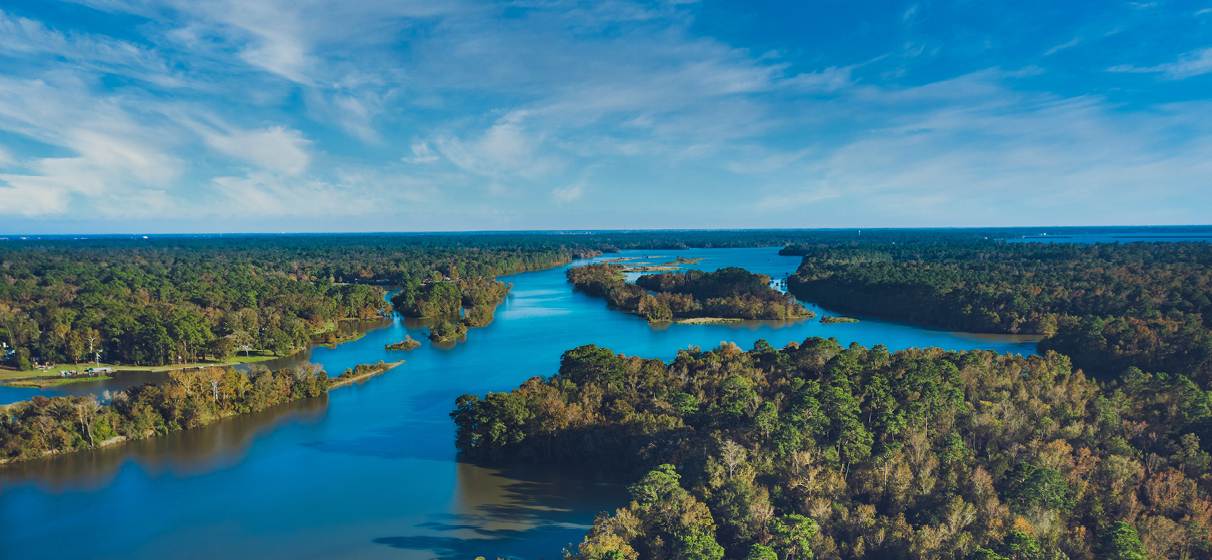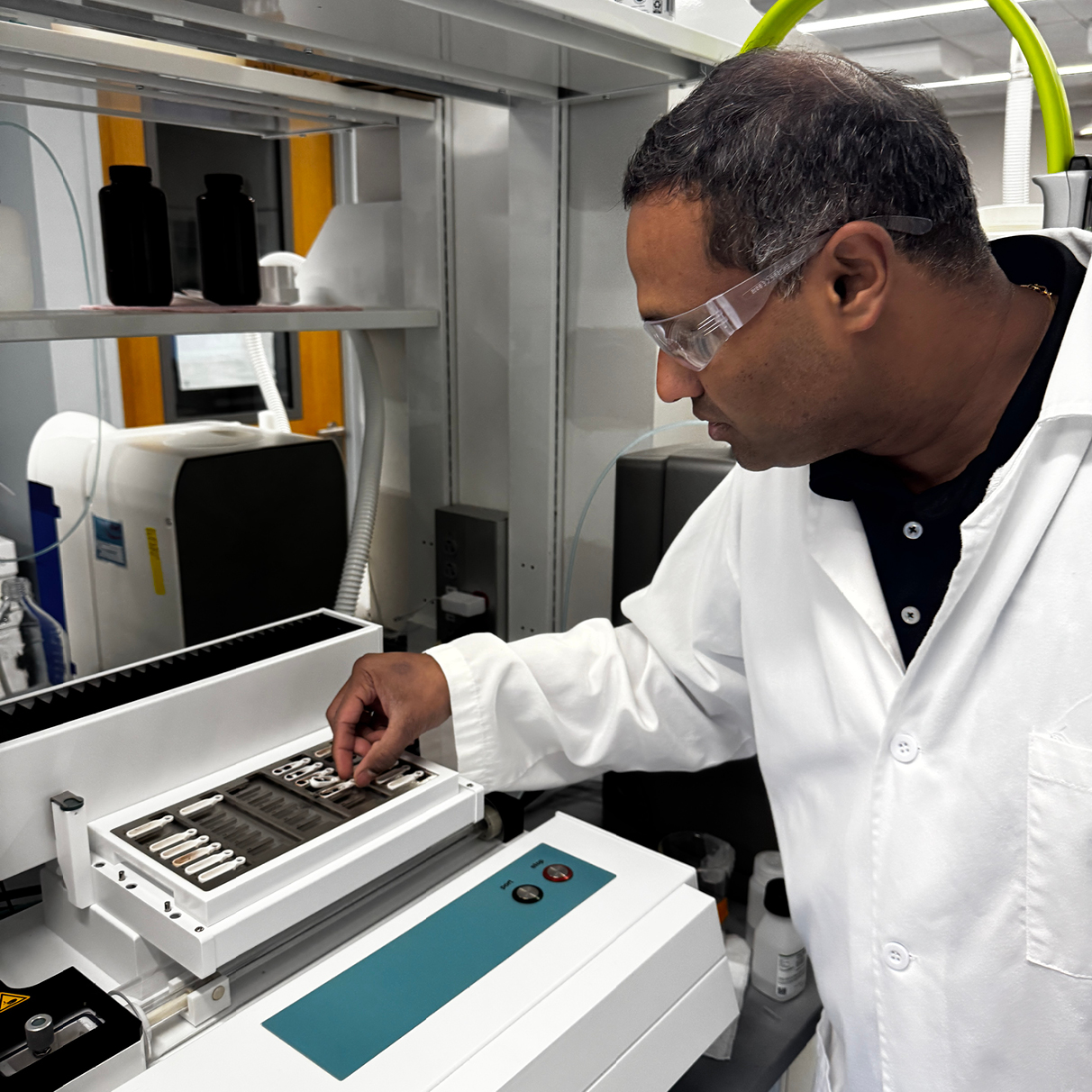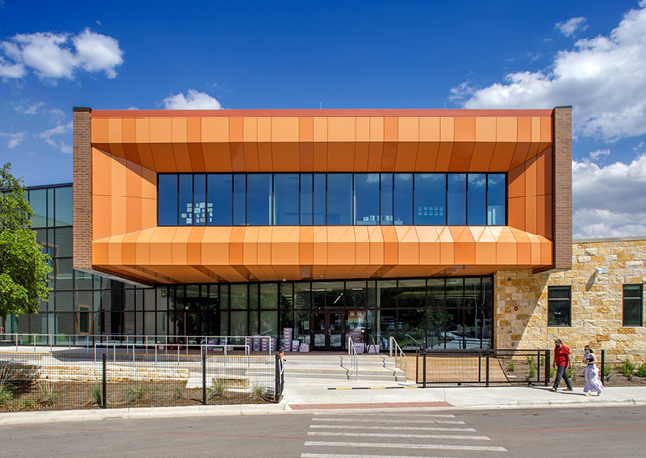In an era where water utilities face mounting pressures – ranging from aging infrastructure and climate volatility to stringent regulatory requirements – the ability to harness actionable insights from historical data is no longer a luxury, but a necessity. At STV, our digital solution team has been at the forefront of enabling smarter decision-making by embedding advanced analytics into the daily operations of all of our infrastructure clients.
One of our most recent and illustrative efforts involved the development of a comprehensive digital dashboard and forecasting model for Lake Houston in Harris County, Texas. As a primary source of drinking water and ecological vitality for the region, Lake Houston’s water quality plays a crucial role in public health and environmental sustainability. Our goal was to move beyond routine monitoring and leverage data to predict, visualize, and inform future decisions about water quality management.
From Raw Data to Predictive Intelligence
The foundation of this initiative was a rich dataset spanning nearly a decade (2015–2023), covering five key parameters: temperature, dissolved oxygen (DO), pH, turbidity and specific conductance (SC). These parameters were measured at multiple depths – 1, 6, 12 and 14 feet – allowing for a nuanced, vertical profile of water conditions. Figure 1 shows the time series plot showing DO trends across four depths (1ft, 6ft, 12ft, 14ft) from 2015 to 2023.
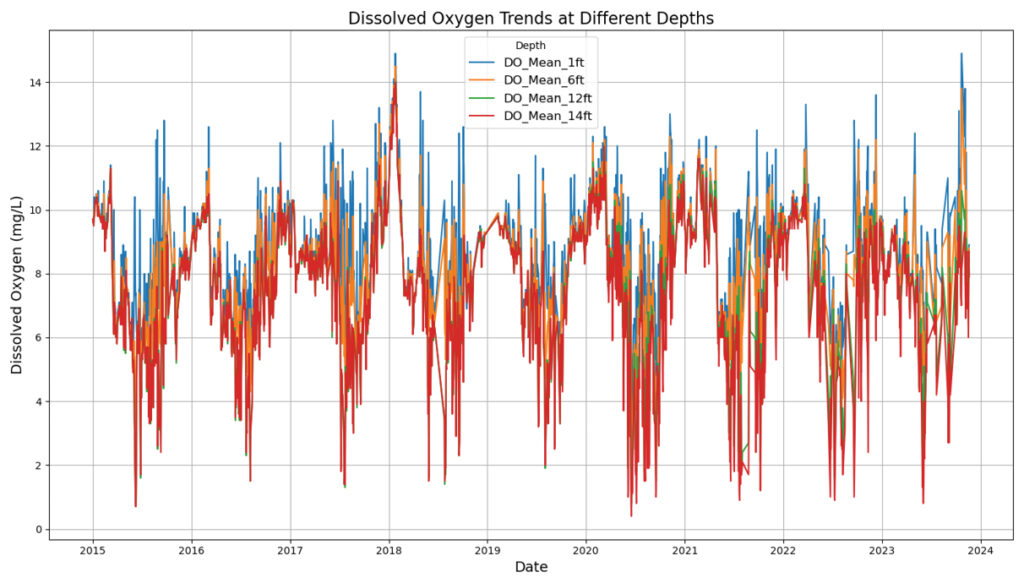
Using a combination of statistical and machine learning techniques, we were able to identify not only seasonal patterns but also water depth-based anomalies and interdependencies that would otherwise go unnoticed.
For example, our analysis revealed:
- Seasonal stratification where deeper layers exhibited lower DO levels in the summer, thus increasing the risk of hypoxia.
- Turbidity spikes in spring and fall, likely driven by runoff and sediment resuspension; crucial for planning filtration loads at treatment plants.
- Stable but subtly shifting SC patterns, with anomalies becoming more frequent after 2020, hinting at potential changes in salinity or runoff chemistry.
These insights were synthesized into a Power BI-based digital dashboard, enabling infrastructure owners to interactively explore water quality trends by time, depth and parameter, turning complex data into an intuitive decision support tool.
Forecasting Future Water Quality Parameters with LSTM Models
One of the most transformative elements of our approach was the integration of Long Short-Term Memory (LSTM) models for forecasting future water quality parameters. Compared to conventional time series forecasting models like Autoregressive Integrated Moving Average (ARIMA) and Seasonal ARIMA (SARIMA), the LSTM’s ability to learn and capture complex temporal dependencies and nonlinear patterns made it particularly effective.
Our 10-year projections for parameters such as temperature and SC offer a long-term view, helping municipalities plan infrastructure upgrades and allocate resources more effectively. By analyzing historical water quality trends, the Lake Houston water quality forecasting and interactive dashboard visualization enable drinking water facilities in Houston to anticipate both demand and water quality conditions in real time. This supports a transition from reactive to proactive resource management, enhancing operational planning and decision-making. Figure 2 shows an interactive dashboard visualizing water quality parameters across user-selected ranges and timeframes with a gauge indicating moderate water quality index and scatter plots depicting pairwise relationship at 1 ft depth.
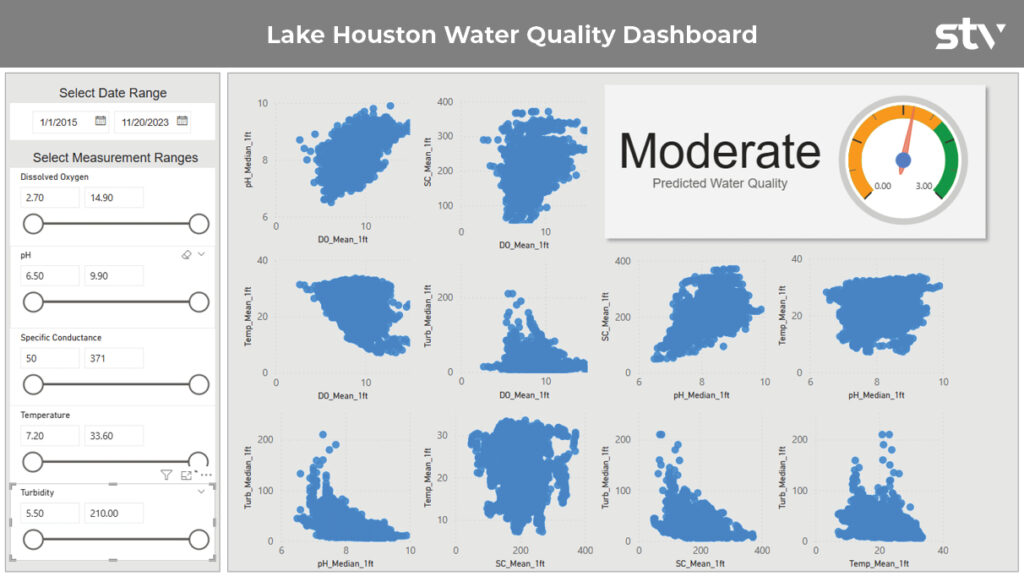
For example, if the data indicates that water quality may degrade due to upstream factors or that turbidity spikes may strain systems, treatment plants can take proactive steps to so that their processes remain efficient and that residents continue to receive clean, safe drinking water. This foresight gives facility operators a powerful tool to prepare for fluctuations in water quality sothat water treatment processes are optimized before issues arise. This capability is crucial for a city like Houston, where water resources are vital for a growing population and for industry.
Beyond local water needs, Houston is also exploring ways to supply water to drought-stricken areas across the state. Machine learning-based forecasting, such as LSTM, offers a powerful approach to predictive analytics in water management. These models enable the city to effectively anticipate and respond to fluctuations in water quality, supply, and demand. By integrating such forecasts into operational planning, the city can develop data-driven, strategic approaches to regional water distribution and resource optimization.
Making Sense of Complexity
The Lake Houston initiative illustrates how predictive analytics tools can demystify the complex variables inherent in managing water resources. We are not merely crunching numbers; we are telling a story with data, one that helps water utilities and public agencies make decisions grounded in evidence rather than assumptions.
In the face of increasing climate shocks and population growth, water managers need more than static compliance reports – they need dynamic, predictive, and customizable tools. By identifying recurring seasonal patterns, recognizing depth-based vulnerability and detecting subtle anomalies, we empower stakeholders with the intelligence needed to optimize performance, meet regulatory compliance and uphold public trust.
The Future of Water is Digital
As digital transformation reshapes every corner of infrastructure, the water industry is poised to reap the benefits of analytics-driven strategy. The Lake Houston initiative serves as a blueprint for how predictive analytics and interactive dashboards can transform raw water quality data into actionable foresight.
